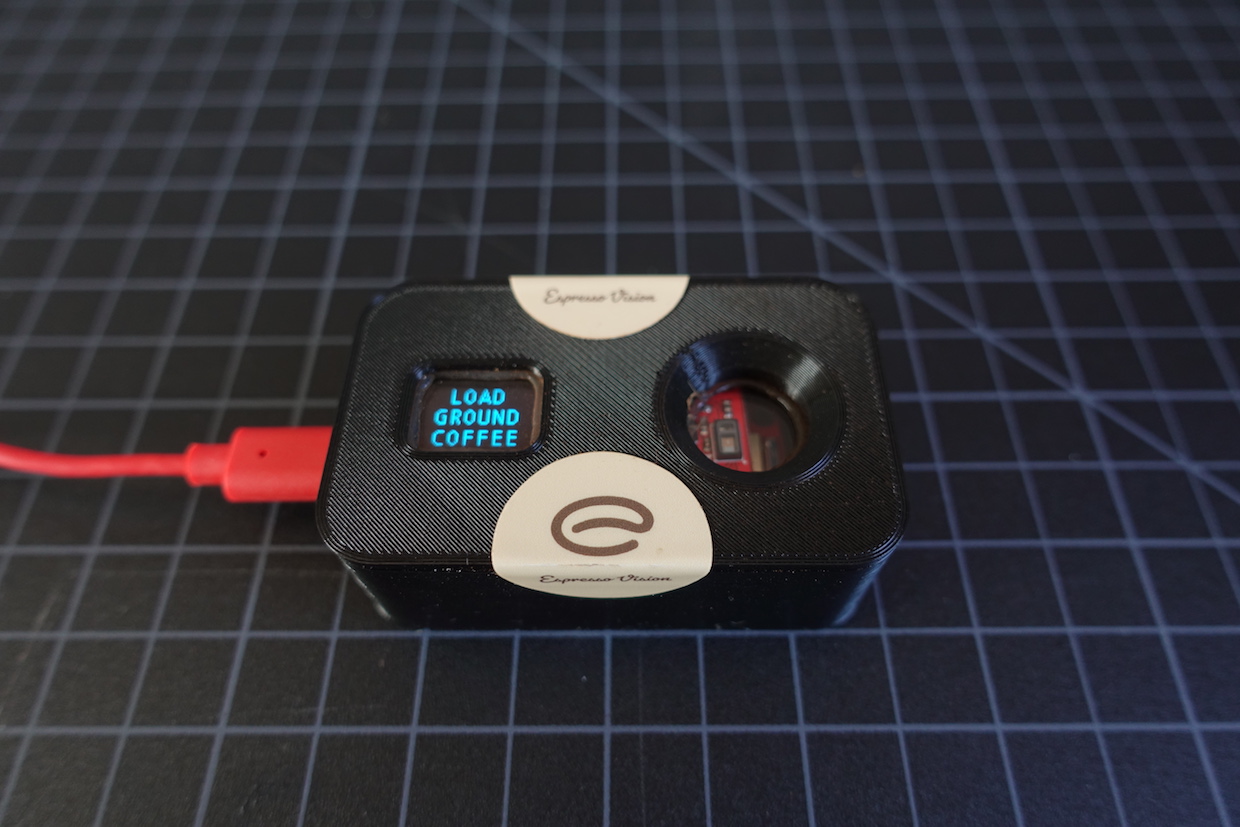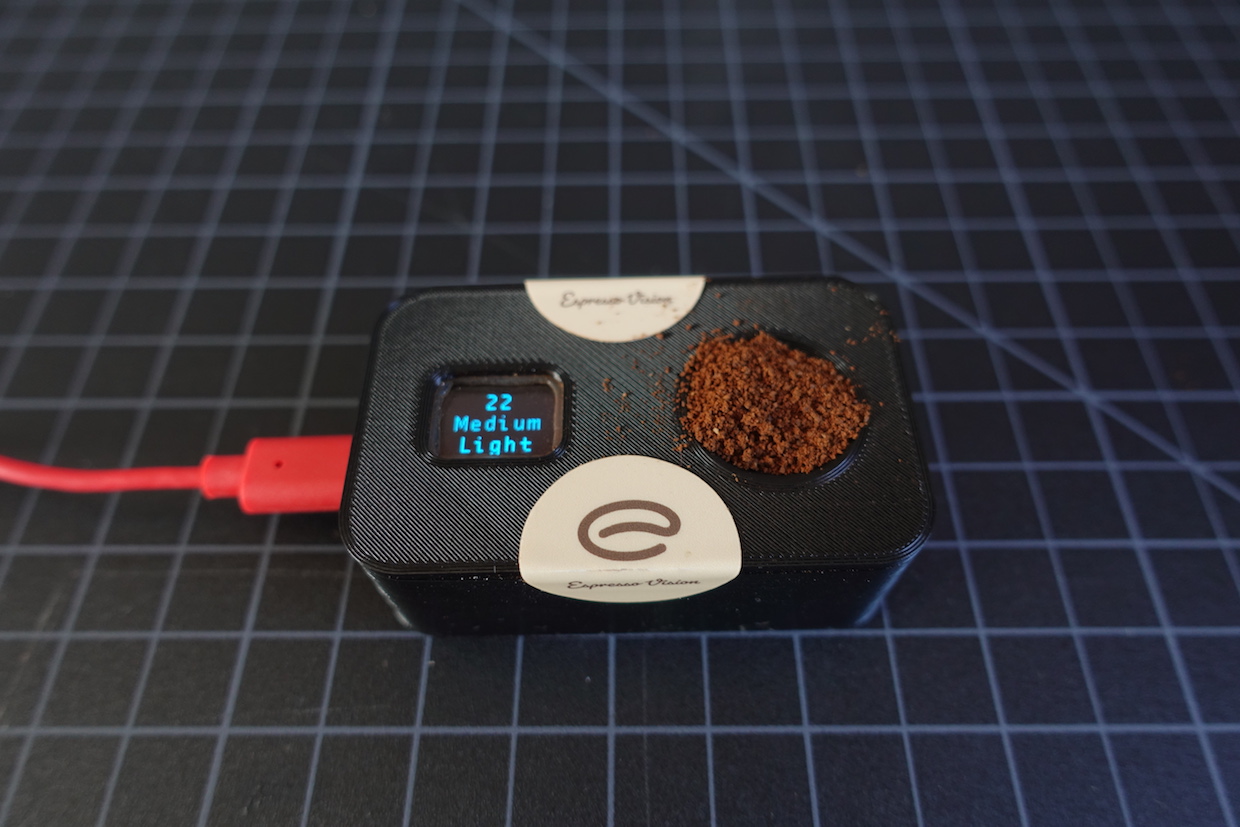
The Roast Vision roast level analysis tool from startup Espresso Vision, led by a Boston University graduate student. All images courtesy of Espresso Vision.
With a straightforward name, Roast Vision is a roasted coffee color analysis tool designed to yield accurate results and uncomplicated data at an affordable price for home users and startup coffee roasters.
Zach Halvorson, founder of Espresso Vision, the one-person company behind the new device, told Daily Coffee News that the lightweight, handheld gadget incorporates a number of components, including some open-source hardware, that result in functionality “built upon the fundamentals of NIR (near infrared) reflectance.”
Sales of the pocket-size device, which costs $299, launched online last month.
The Roast Vision requires roughly a teaspoon of ground coffee to take its measurement within a second or two. It is powered by plugging into any power source with a standard USB port.
The decision to omit an onboard battery was made to keep the price down and to simplify manufacturing and shipping in the company’s startup mode, though a planned future version of the Roast Vision won’t need to be plugged in.
“The device is very energy efficient, and we look forward to future models offering extremely long battery life,” said Halvorson, who is currently a graduate student in electrical and computer engineering at Boston University.
The Roast Vision offers basic descriptors such as “medium light” or “very dark” in each analysis, while coffees are measured through a balanced, numerical scale. From darkest to lightest, the scale runs from 0-35, with a perfect medium falling squarely at 17.5 — although the device only displays whole numbers.
“Compare this to the Agtron scale where dead-center medium is 55, very light is 95 (+40), and very dark is 25 (-30),” said Halvorson. “While this may be inconsequential for more advanced users, we believe that having a balanced scale will be more intuitive for a general coffee consumer that may already be accustomed to seeing other figures depicting roast level in a symmetric manner, [such as] five empty circles, for example, from Light to Medium to Dark, with the circle of the roast level filled in on a coffee bag.”
While continued development of the Roast Vision device is Espresso Vision’s primary order of business, Halvorson expects to soon move into the development of an air sensor that detects first crack based on air quality that could potentially be integrated as an additional sensor in Artisan or Cropster roast monitoring software.
Howard Bryman
Howard Bryman is the associate editor of Daily Coffee News by Roast Magazine. He is based in Portland, Oregon.










Comment